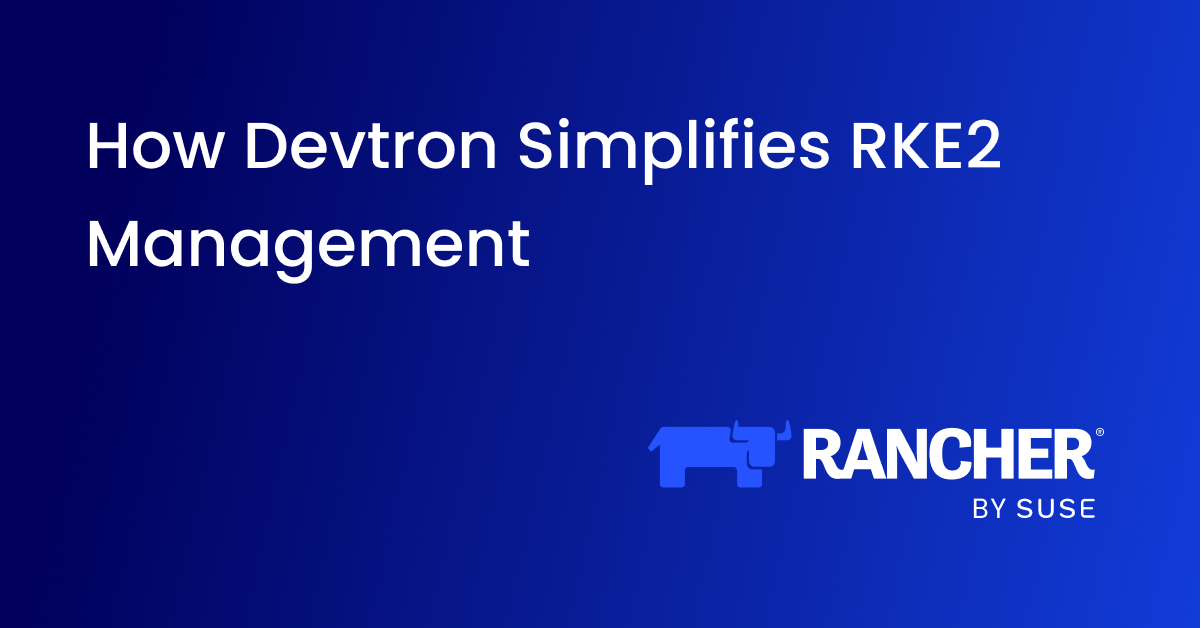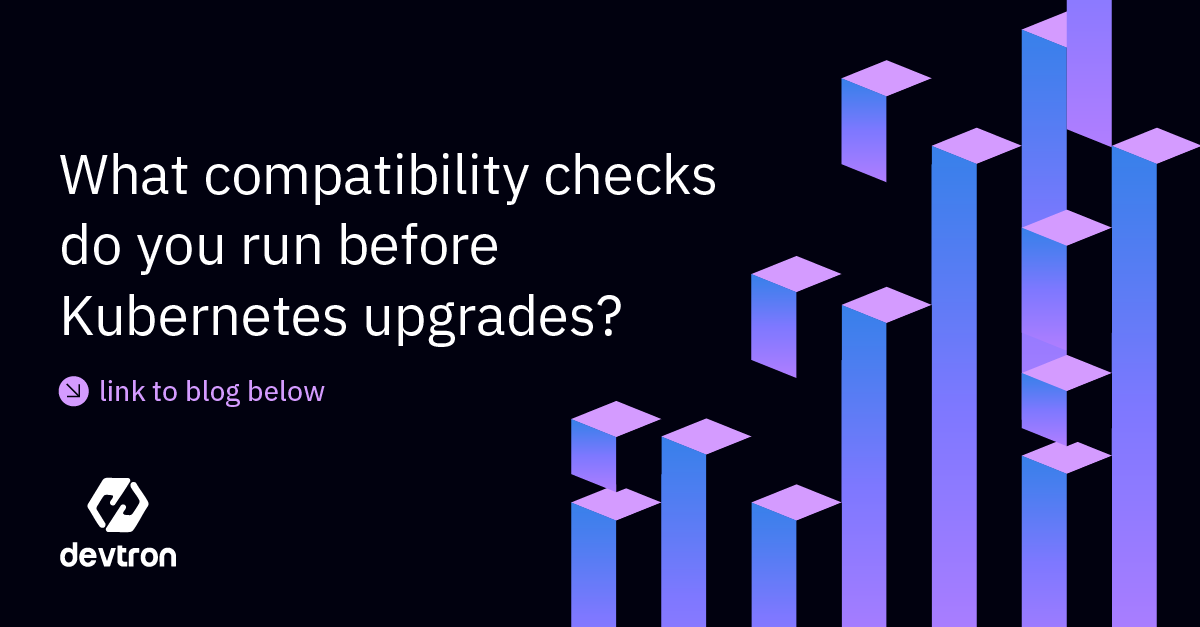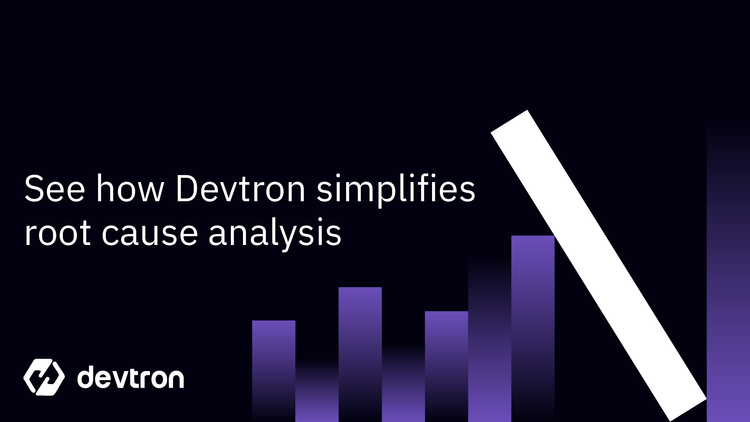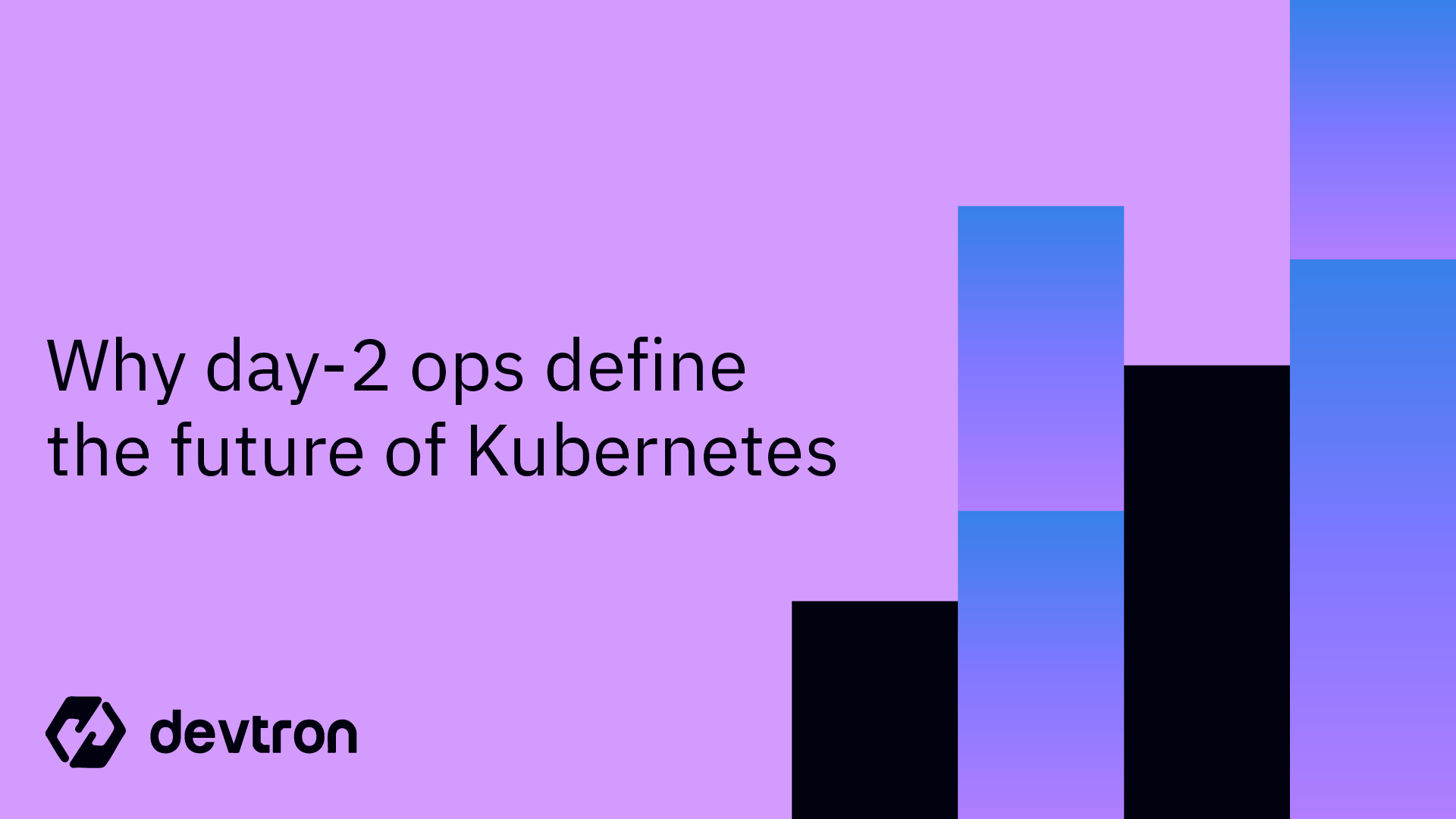1. RKE2 simplifies Kubernetes for edge and on-prem, but managing it at scale is complex. Devtron solves this by automating cluster operations and improving developer experience.
2. Seamless onboarding of existing RKE2 clusters with service account-based authentication and intuitive UI for adding clusters and environments.
3. Built-in GitOps, RBAC, and observability bring secure automation, fine-grained access control, and real-time monitoring to multi-cluster RKE2 deployments.
4. Custom CI/CD pipelines, Helm lifecycle management, and one-click rollbacks streamline app delivery across Dev, Staging, and Prod environments.
5. Disaster recovery, secret management, and centralized dashboards make RKE2 operations scalable, resilient, and production-ready with Devtron.
Introduction to RKE2
RKE2 (Rancher Kubernetes Engine 2) is a hardened, production-grade Kubernetes distribution, especially popular for edge, air-gapped, and on-premise environments. While RKE2 provides a secure foundation, managing it at scale introduces operational complexities.
This is where Devtron RKE2 support comes into play — offering a modern platform to install RKE2 with Devtron, automate cluster operations, and deliver consistent developer experiences.
Operational Challenges in Managing RKE2 Clusters
Manual YAML and Configuration Drift
Managing RKE2 clusters with handcrafted YAML manifests often leads to configuration drift, version inconsistencies, and a lack of repeatability. Without automation, scaling infrastructure becomes error-prone.
Multi-cluster and Multi-environment Complexity
Handling multiple RKE2 clusters across dev, staging, and production environments creates operational overhead. Maintaining consistency, isolation, and compliance becomes harder as clusters multiply.
Gaps in Native GitOps and RBAC
RKE2 lacks out-of-the-box GitOps workflows and granular RBAC controls. Teams often resort to complex custom setups, which are hard to maintain and audit.
Limited Visibility and Lack of Troubleshooting Insights
Native RKE2 installations provide limited monitoring and observability. Debugging failed deployments or performance bottlenecks becomes reactive, time-consuming, and manual.
(Additional Point) Upgrade and Maintenance Complexity
Coordinating RKE2 upgrades and dependency updates across environments involves downtime risks and manual intervention. A streamlined update path is essential for production-grade deployments.
Seamless Devtron-RKE2 Integration
Onboarding Existing RKE2 Clusters to Devtron
Devtron enables seamless onboarding of existing RKE2 clusters — whether they’re running in the cloud, on-premise, or in air-gapped environments. To establish a secure connection between Devtron and the RKE2 cluster, Devtron uses a service account-based authentication method via the Kubernetes API server.
Step-by-Step Guide:
Run the onboarding script in your RKE2 cluster
Execute the following command inside the target RKE2 cluster:
curl -O https://raw.githubusercontent.com/devtron-labs/utilities/main/kubeconfig-exporter/kubernetes_export_sa.sh && \
bash kubernetes_export_sa.sh cd-user devtroncd- Creates a
ServiceAccount(cd-user) - Binds it to a cluster-wide
adminClusterRole - Generates a bearer token for Devtron to authenticate securely via the Kubernetes API server.
- Ensure network connectivity
Devtron must be able to reach the RKE2 API server over the network. This typically means opening firewall rules or configuring VPN tunnels, if especially in air-gapped or on-prem environments. - Add the cluster in Devtron UI
In your Devtron dashboard, navigate to the Global Configurations --> Clusters and Environments and click on Add New Cluster.
Use Server URL & Bearer token as shown below:- Cluster Name: Enter a recognizable name (e.g.,
rke2-prod-cluster) - Server URL: The Kubernetes API server endpoint (e.g.,
https://<your-rke2-server-ip>:6443) - Bearer Token: Paste the token from the onboarding script
- Environment: Choose between Production or Non-Production based on your use case
- Optionally, enable TLS verification for secure communication
- Cluster Name: Enter a recognizable name (e.g.,
- Add Environments to the Connected RKE2 Cluster
Once the cluster is added, the next step is to create environments within that cluster to organize and deploy workloads.
In the UI, click "Add Environment", then define:- Environment Name (e.g.,
rke2-prod,rke2-utils) - Namespace to deploy apps into
- Label it as Prod or Non-Prod
- Environment Name (e.g.,
For detailed instructions on adding environments, refer to the official guide.
Once these steps are complete, you're ready to:
- Build and deploy applications using custom CI/CD pipelines
- Manage resources at scale
- Leverage Devtron’s GitOps, RBAC, and observability tooling for rke2 cluster automation
This simplifies the journey from manual management to RKE2 cluster automation.
Devtron’s Architecture Compatibility with RKE2
Devtron’s modular, Kubernetes-native architecture aligns well with RKE2’s CRI-O runtime and CIS-hardening. There are no intrusive dependencies, and the system runs smoothly alongside Rancher or standalone RKE2 setups, offering out-of-the-box Devtron RKE2 support.
Simplifying Cluster Operations with Devtron
Unified UI for Workload Deployment
Devtron eliminates the need to manually deal with kubectl, YAML, or Helm CLI for application deployment. You get a consistent graphical interface where:
- Applications are deployed directly into RKE2 clusters
- Helm values can be overridden during deployment
- Application rollout history, versions, and status are easily traceable
- Deploy applications with a click using Helm
This significantly improves team productivity and reduces the learning curve for managing RKE2 clusters.
Custom CI/CD Pipelines for RKE2
Devtron’s Kubernetes-native CI/CD engine is fully compatible with RKE2, enabling flexible, scalable, and secure software delivery.
Key Features:
- Single- or Multi-Git Application Support: Define monorepo or polyrepo strategies. Build apps from multiple git repositories in a single pipeline or isolated microservices pipelines.
- Custom Docker Image Builds: Create Docker images using pre-configured or custom steps. Use pre-configured pipeline steps or bring your existing
Dockerfile. You can build, test, scan, and push containers from within Devtron itself. - Advanced Deployment Strategies: Automate image tagging, PR-based deployments, versioned releases, or tag-based triggers. Choose between Git commit, tag, or manual approval workflows.
All of this works natively with Devtron RKE2 support, letting you install RKE2 with Devtron and immediately activate enterprise-grade CI/CD.Namespace and Environment Management at Scale.
Namespace and Environment Management at Scale
Scaling across teams and environments can be painful in native Kubernetes, especially in large RKE2 clusters. Devtron solves this with a structured, visual, and secure approach.
Highlights:
- Environment Tagging: Easily mark environments as
Prod,Non-Prod, etc., and apply rules accordingly. - Application Groups: Organize workloads logically using Application Groups, enabling coordinated deployments, observability, and troubleshooting.
- Deploy-to-Environment Feature: Quickly deploy to a specific environment with a few clicks, whether it’s testing or a hotfix in staging or rolling out to production.
Helm Chart Lifecycle Management Across Clusters
Devtron takes Helm — the de facto standard for Kubernetes packaging — and scales it across your entire RKE2 ecosystem.
Key Capabilities:
- Chart Groups: Manage multiple Helm charts with common configurations across environments.
- Custom Charts and Presets: Use your own charts, define preset values per environment, and simplify onboarding.
- One-Click Multi-Env Deployments: Deploy to multiple environments (e.g.,
dev,QA,prod) in a single action, using shared or custom values.
This makes Devtron a powerful interface to standardize deployments across multiple RKE2 clusters and environments without scripting or reinventing workflows.
GitOps and RBAC for RKE2 Using Devtron
This section highlights how Devtron RKE2 support brings secure, streamlined GitOps workflows and fine-grained RBAC control to your RKE2 cluster automation efforts.
Enforcing GitOps for App Delivery and Infra Sync
In modern production environments, Git should be the single source of truth, especially in RKE2 clusters running critical workloads. Devtron makes GitOps native and enforceable.
Key Features:
- Environment-Specific GitOps Enforcement: For example, you can enforce GitOps only on
Prodwhile allowing flexibility inDevorStaging. - Config Drift Detection: If any manual changes are made using
kubectl(e.g.,kubectl patch) directly on the cluster, Devtron flags it as drift. - Optional Auto-Sync Mode: You can enable auto-sync to automatically revert manual changes based on Git state, ensuring Git remains the canonical source.
- Visual Feedback in Devtron UI: Users are notified of mismatches during the next deployment, making it easy to identify and fix accidental or emergency patches.
This helps teams confidently install RKE2 with Devtron, enforce GitOps principles, and avoid hidden production issues due to out-of-band changes.
Granular Access Control and Role Delegation
Managing access in Kubernetes natively is often complex and error-prone, requiring you to manually configure ClusterRole, ClusterRoleBinding, Role, RoleBinding, and ServiceAccounts just to assign basic access. This becomes even more challenging at scale, especially when managing multiple RKE2 clusters across environments.
Highlights:
- Team-Based Role Assignment: Create groups for
DevOps,Developers,QA,Security,Marketing, etc., and assign permissions accordingly. - Fine-Grained Access Levels:
- Application-level roles:
View,Build & Deploy,Admin,Approver - Kubernetes Resource-Specific Roles: Define access controls not just at the namespace or application level, but down to individual Kubernetes resources — whether it's Pods, Deployments, ConfigMaps, Secrets, or any custom resource. You can assign view, admin, or scoped access for any Kubernetes object directly from the Devtron UI.
- Application-level roles:
- User Groups and Permission Sets: Assign roles either directly to users or via Permission Groups (ideal for scaling access policies).
- UI-Based Management: All roles and permissions can be configured via Devtron’s UI — no YAMLs, no
kubectl, no complexity.
This makes RKE2 cluster automation secure, auditable, and extremely manageable — from Day 1.
Auditing Changes Across Clusters
Cluster-wide visibility and compliance are top priorities for most teams using RKE2 in production. Devtron delivers built-in audit logging across environments.
Key Capabilities:
- Cluster-Wide Event Tracking: Every change—deployment, config edit, approval — is logged, along with the user who made it.
- Centralized Audit Log Storage: No need to enable and manage separate audit policies on every RKE2 API server.
- Filter and Analyze Events: Easily trace what happened, where, and by whom — all from Devtron’s dashboard.
Whether it's for compliance, security, or debugging, this visibility across multiple RKE2 clusters removes the need for manual monitoring.
Observability and Monitoring for RKE2
Modern Kubernetes operations demand deep, real-time visibility into clusters, workloads, and infrastructure — especially when managing RKE2 clusters in production. Devtron brings observability natively into its platform, eliminating the need for external dashboards, CLI tools, or integrations.
Real-Time Dashboards for App and Cluster Health
With Devtron, you can monitor both application and cluster health directly from the UI, in real-time.
Key Capabilities:
- Application Health Indicators: Instantly view whether your apps are healthy, progressing, or degraded — with deployment status, pod conditions, and restart counts.
- Cluster-Level Monitoring: Devtron continuously pings the RKE2 cluster every 30 seconds to assess connectivity, API responsiveness, and node availability.
- Granular Node Diagnostics: If a node becomes problematic (e.g., due to kubelet failures, throttling, or networking errors), Devtron surfaces the root causes with Kubernetes event data.
All of this works seamlessly thanks to Devtron RKE2 support, enabling precise and proactive management.
Logs, Metrics, and Event Correlation
Devtron gives you centralized access to application logs, metrics, and events — all in one place, without needing kubectl, external Grafana, or manual Prometheus queries.
Features:
- Pod Logs Viewer: Access real-time logs from all containers and pods in a selected application.
- Application-Level Metrics: Instantly view throughput, latency, and error rates for each app — no extra setup needed.
- Event Timeline: Correlate logs and metrics with Kubernetes events to trace issues like failed deployments, restarts, or node pressure.
This eliminates the need for complex dashboards and enables RKE2 cluster automation in observability itself.
Troubleshooting Failed Deployments in RKE2 Clusters
When a deployment fails, Devtron provides a visual interface to troubleshoot and resolve the issue faster, without guesswork.
What You Get:
- Root Cause Insights: Identify YAML validation errors, timeout issues, policy restrictions (e.g., network policies or PSA blocks), and more.
- Event Tracebacks: See the full deployment history and where it failed, including sync and rollback events.
- One-Click Rollbacks: Instantly revert to a previous stable version without manual intervention or cluster-level edits.
Combined with full-stack visibility, these tools reduce MTTR and make installing RKE2 with Devtron truly operational from Day 1.
Managing Multi-Environment RKE2 Deployments
Managing multiple environments — Dev, Staging, and Prod — across several RKE2 clusters can quickly become operationally overwhelming. Devtron brings environment-aware automation, centralized configuration, and seamless recovery workflows to ensure RKE2 cluster automation stays scalable and resilient.
Dev ➝ Staging ➝ Prod Pipeline with Environment Promotion
Devtron allows you to build both parallel and sequential CI/CD pipelines for promoting changes across environments, ensuring a smooth transition from Dev to Prod.
Key Benefits:
- Series Pipelines for Stability: Promote builds from Dev ➝ Staging ➝ Prod in a step-by-step, tested manner.
- Parallel Pipelines for Speed: Run pipelines simultaneously across environments where needed.
- Hotfix Deployments: Push critical fixes directly to Prod using image promotion, gated with config approvals and image approver roles.
This allows you to install RKE2 with Devtron and maintain a stable delivery flow without compromising speed.
ConfigMap and Secret Management Across Environments
Devtron simplifies centralized management of configurations and secrets across multiple RKE2 clusters and environments.
Features:
- Scoped Variables: Define global config and secret variables that apply across clusters or specific environments — ideal for mandatory parameters like DB credentials, cloud keys, or service URLs.
- Environment-Level Overrides: Customize sensitive or dynamic values (like
env-specific URLs) while maintaining a consistent structure. - Propagate to All Pods: Easily inject shared values across all pods in an environment using built-in variable management — no manual duplication.
Perfect for enterprise-grade use cases requiring consistent and secure secret propagation across clusters.
Disaster Recovery and Rollback Workflows
High availability and fast recovery are critical in RKE2 production environments. Devtron offers out-of-the-box DR and rollback workflows that require no scripting or external tooling.
How It Works:
- One-Click Rollback: Revert your application to the last known good state with a single click — no manual YAML edits or downtime.
- Cluster Failover: If a cluster becomes unavailable, simply register a new RKE2 cluster with Devtron and redeploy the same app — Devtron handles the sync and rollout.
- Version History: Full version control of deployments ensures you can quickly recover from bad releases or outages.
With Devtron RKE2 support, recovery is no longer a multi-hour operation — it's built-in and instant.
Conclusion
Managing RKE2 clusters at scale — across environments, teams, and pipelines — comes with a unique set of challenges. Devtron addresses this head-on with a powerful, UI-driven platform purpose-built for Kubernetes operations.
Whether you're already running RKE2 or planning to adopt it, Devtron offers an easy integration path. Visit Devtron Documentation or explore the RKE2 installation guide to begin your journey.
FAQs
What is RKE2 and why is it used?
RKE2 (Rancher Kubernetes Engine 2) is a secure, production-grade Kubernetes distribution designed for edge, air-gapped, and on-premise environments. It provides CIS-hardening and supports container runtimes like containerd and CRI-O for enhanced security.
What challenges do teams face while managing RKE2 clusters?
Teams often struggle with configuration drift, multi-cluster management, lack of native GitOps workflows, limited observability, and manual upgrade processes. These issues increase operational overhead and risk downtime in production environments.
How does Devtron simplify RKE2 cluster management?
Devtron enables seamless onboarding of RKE2 clusters, centralized CI/CD pipelines, GitOps enforcement, fine-grained RBAC, and full observability. It provides a unified UI for deployments, upgrades, and troubleshooting, making RKE2 operations scalable and efficient.
Can I use Devtron with existing RKE2 clusters?
Yes. Devtron allows onboarding of existing RKE2 clusters running on cloud, on-premise, or air-gapped environments using service account-based authentication and secure API access.
Does Devtron support multi-cluster and multi-environment RKE2 setups?
Absolutely. Devtron is designed to manage multiple RKE2 clusters across dev, staging, and production environments. It provides namespace management, environment tagging, and automated promotion pipelines for seamless operations.






